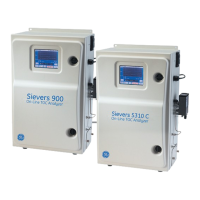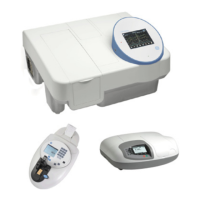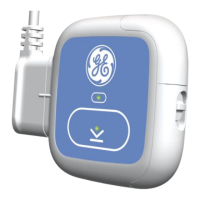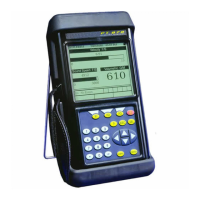GE Analytical Instruments ©2010 122 of 226 DLM 74001-04 Rev. A
Chapter 6: Calibration and System Protocols
14. The Analyzer indicates if the calibration passed.
• If the calibration passed, press the Apply button to accept the calibration and continue.
• If the calibration failed, press the Cancel button to reject the calibration. You may need to perform
the calibration procedure again. However, first consult the chapter called “Troubleshooting” on
page 153 to determine if there is a problem with the Analyzer.
The summary screens show data collected for each of the vials, as well as several calculated values.
Exp is expected value. For RW IC (TOC Calibration Blank), this is the measured value for the TC channel,
with the UV lamp off. For 1.50ppm TOC (TOC Calibration Standard), this is the expected value for RW2
TOC plus 1.5 ppm. For 1.00ppm TOC and 500 ppb TOC (TOC Calibration Standards), this is the expected
value for RW3 plus 1.00 ppm or 500 ppb, respectively. For 25.00 S/cm tCond (Conductivity Standard),
this is the certified value of the standard, as shown on the vial label.
Diff is percent difference between the average and expected value.
Adj is the adjusted value, with the new calibration applied.
15. Press Exit.
16. If you have a Super iOS system, and selected the After or the Before and After option, the Analyzer will
prompt you to remove the standards, and to insert the rinse cartridge or vials into the Super iOS system
to continue the Rinse activity. Take out the rinse cartridge or vials when completed.
17. If you have a standard iOS System, remove the standards and slide the iOS door closed.
18. You should now verify the calibration. Proceed to “Accuracy, Precision, and Calibration Verification” on
page 124 for instructions.
Figure 26: The First Summary Screen in a Multi-Point Calibration
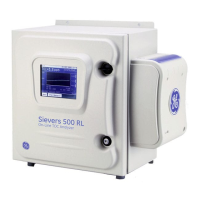
